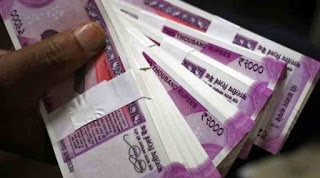Despite Rupee weakness, Forex has cover!
India’s foreign exchange reserves still
provide ample
cover of imports and short-term external
debt
Recently
Economic growth jumped to 8.2% YoY in Q2, highest level since early 2016,
proves, India is feeling the heat from emerging markets EM turmoil, but is no
Turkey or Argentina! Q1 proves, India’s foreign exchange reserves still provide
ample cover of imports, says Arjen van Dijkhuizen, Sr. Economist, ABN AMRO. His
India Watch said, ‘Growth jumps to 2-year high despite market turmoil!
Higher
oil prices have driven external deficits up, but external / public debt ratios
manageable, FX reserves still comfortable, higher core inflation and rupee
weakness have triggered two RBI rate hikes! Parliamentary elections in spring
2019 litmus test for Modi, Further clean-up of banking sector needed!
Over
the past months, Ems have been hit by a general risk aversion, driven by
ongoing Fed rate hikes and general US dollar strength, an escalating trade
conflict between the US and China and a weakening of the Chinese Yuan. These
generic factors have affected a large number of EMs, although with varying
intensity.
Turkey
and Argentina have been amongst the hardest hit, but others – including India –
are also feeling the heat. The Indian rupee has lost almost 9% since the US
dollar since March. This is more or less similar to other EM Asian currencies,
but much less than for instance the Turkish lira, the Argentine peso, the South
African rand or the Brazilian real.
Although
India’s external vulnerabilities have risen, its fundamentals are overall
stronger than for instance Turkey and Argentina. Its growth (potential) is much
higher and its external and public debt ratios are much lower, while India’s
foreign exchange reserves still provide ample cover of imports and short-term
external debt. Therefore, we do not think that India will face similar problems
as Turkey or Argentina.
In
conclusion Arjen says, India has not been immune to the market turmoil
affecting EMs. Higher oil prices have driven external deficits up, there is
some fiscal slippage in the run-up to the 2019 elections and many structural
challenges remain including in infrastructure development and strengthening the
banking system.
That
said, from a fundamental macro perspective, the country is in much better shape
than Turkey or Argentina. Hence, we do not expect India to face similar amounts
of stress. Foreign reserves still comfortable, external and public debt ratios
manageable!
“On
the fiscal front, we expect the government to continue with its approach of
gradual consolidation and reducing the budget deficit below 3.5% of GDP,
although progress has stalled partly due to higher than expected oil prices and
the rise in government bond yields stemming from the latest EM market turmoil.
That said, the public debt ratio is on a downward trend reflecting India’s high
growth rates, and is expected to fall to below 50% of GDP this year!” (First
published on September 4, 2018)






Comments
Post a Comment